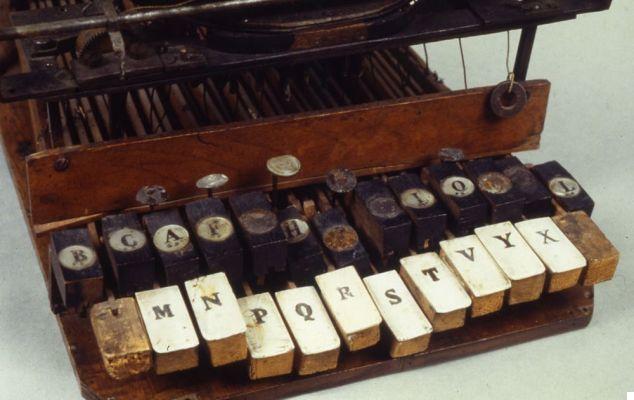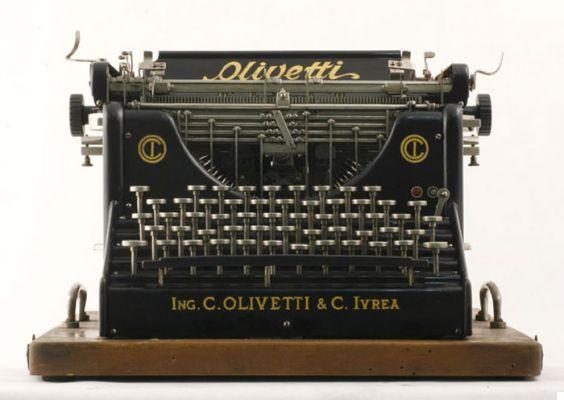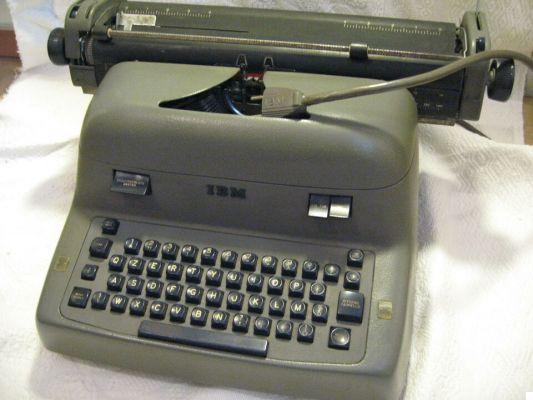Our column "How has it changed" is back with an absolutely exceptional guest, the typewriter. An object that represented a real revolution in writing, but which today seems to be relegated more to collecting than to everyday use. After all, the Olivetti typewriter has made its history, but has now been largely replaced by tablets, smartphones and PCs. But who really invented this object? And what was used to write before Camillo Olivetti made his appearance in history?
Who Invented the Typewriter?
The authorship of the typewriter invention is rather nebulous. Just think they have been well 52 the inventors who, in different times and places, have created a prototype of this object. One thing is certain, however: it is an Italian invention. One of the very first projects, in fact, is due to Francesco Rampazetto, a typographer and publisher active in Venice, who developed a mechanical device that allowed the blind to communicate with each other. It was 1575, and Rampazeto devised a rudimentary device, made up of wooden cubes with characters formed by metal pins that pierced the sheet, thus leaving the letters engraved on the paper.
An object designed with a noble purpose, but with a functioning far from what we know today. It will take many more years and prototypes, in fact, before arriving at the first typewriter in history. The authorship of the object is attributed to Giuseppe Ravizza, a Novara lawyer who began working on his "cymbal scribe”Around 1837. The name is undoubtedly curious, and refers to the appearance of the Ravizza machine, very similar to that of a harpsichord. A small piano to write, so to speak. But what matters is not so much the appearance, but the functionality of this typewriter, which managed to obtain a patent in 1855.
“The Ravizza device is a machine with a small keyboard similar to that of cymbals, with the keys inscribed in alphabetical order of all the letters and punctuation; by beating which keys successively and quickly, the letters and signs corresponding to the keys touched remain printed on any paper within the machine, with characters, order and alignment proper to the print “. Thus a newspaper of the time describes the invention of the Novara lawyer. And as incredible as it may seem, the Ravizza machine had a not inconsiderable defect. Since the paper to write on was placed horizontally, it did not allow the writer to read as he typed the text. A detail he worked on for almost 25 years, until he was able to load the paper vertically, thus making what was written legible.
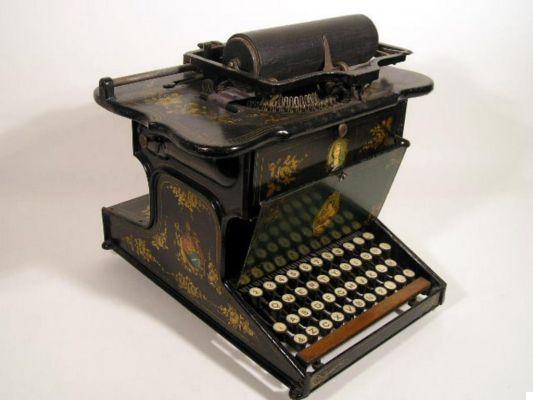
The American industry and the Qwerty keyboard
For decades, Italians delighted in the invention of prototypes of all kinds, but without really arriving at an object that could meet the needs of the market. And so, even before the Olivetti typewriter, it was the Americans who had the right intuition to make this product truly marketable. In particular, it was Christopher Latham Sholes - a publisher from Wisconsin - to greatly improve the operation of the machines of the time. Apparently, the idea came to him while he was trying to make a machine that could automatically number the pages of books. But Sholes wanted to go further, and design something that could print not just numbers, but all the letters of the alphabet.
READ ALSO: How it has changed: the letter
In particular, one of the most incredible inventions for writing is due to this American publisher: the Qwerty keyboard. The name, for the uninitiated, derives from the first six letters arranged to the left of the keyboard itself. Try looking away from the screen for a second and staring at what's underneath, and you'll see that you will read QWERTY in the top left corner. In any case, Sholes invented an arrangement of the letters that avoided numerous jams the machines of the time suffered from. The alphabetical order, in fact, involved a speed of writing that they could not manage, and so it became necessary to find a useful solution.
But despite this ingenious insight, there was still some flaw in Sholes's car. He could print capital letters only, first of all. It also didn't allow the typist to really know what he was writing, since the gavels printed on the back of the paper. Details that did not interest the E. Remington and Sons, a weapons company that took over the patented prototype and began to distribute it on the market after making some small changes. It was 1874, almost 300 years after the intuition of the Italian Rampazetto. After all, the operation was not too different: at the push of a button, the gavel correspondent transferred the ink from a ribbon to the paper.
The Olivetti typewriter
We all know more or less well the engineer Camillo Olivetti, who became famous for the industrial production of typewriters in Italy. But how many of us really know that the Italian industrialist became famous for bringing a product to the Bel Paese that had been successful in America for years? Maybe a few, let us tell you. Also because the typewriter did a really nice turn before becoming a marketable device. It started in Italy, then was perfected in the United States and then returned here to be officially sold on a large scale.
In fact, Mr. Olivetti had the opportunity to see American projects up close during a trip following his teacher and mentor. Galileo Ferraris. It was 1894 and two years in the role of assistant in the electrical engineering department of Stanford University served the young man to acquire skills in the sector. But it was a second trip to America, in 1904, that gave him even more specific knowledge in the production of typewriters. On his return, in fact, the young engineer worked hard on his personal projects and, in 1911, he presented two machines "Olivetti M1”At the Universal Exposition of Turin. These are innovative products, which add interesting improvements to the American models regarding theautomatic belt reversal and the margin mechanism.
It was the beginning of a great success for the engineer-entrepreneur. Throughout the twentieth century, or almost, the Olivetti typewriter almost monopolized the market. Among the best known models are the Letter 22 and Valentine, the first portable machine. Unlike previous models, this one was meant to be its own case. A real design jewel, which allowed the case to transform into the typewriter.
Even the typewriter becomes electric
It may seem strange to you, but the first electric typewriters began to be designed as early as the late 1800s. Clearly, these were rudimentary prototypes that did not find a real industrial production, but nevertheless had their own relevance in the evolution of this product . It will be enough for you to know that one of the first to have this intuition was Thomas Edison - the famous inventor of the light bulb - in 1870. It was only after thirty years and dozens of patents that the first electric typewriter, the Cahill.
But the real evolution in this sense is due to James Field Smathers, a typist who realized the need to increase the speed of writing, while decreasing fatigue. The solution was only one: electricity. Thus he began to work tirelessly on his project, until he made his typewriter almost perfect, so much so that he was able to enter into a contract with the Northeast Electric Company, interested in finding a new market for its electric motors. From that moment, the Smathers project was acquired by several companies consecutively, so much so that it ended up in the production of IBM, to whom we owe the commercialization of the famous Electromatic.
For those unfamiliar with it, we are talking about the first typewriter that became really famous in the United States. During several corporate acquisitions, IBM managed to redesign the Smathers prototype, thus making it an incredibly successful product. Starting from the Thirties, and up to the Sixties, the company produced different and optimized models of the Electromatic, even making it interfaceable with a computer. It was the first step towards the digitization of writing. The one that, unfortunately, made the Olivetti typewriter a vintage and obsolete object.
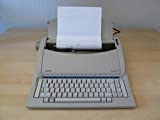 Olivetti Linea 101 - Electric typewriter with ...
Olivetti Linea 101 - Electric typewriter with ...
- Portable.
- Text correction memory Line format memory
- Type wheel writing machine




